Transport projects driven by key trends
24 December 2024

Two key trends are driving the region’s transport projects. The first is a longstanding competitive advantage based on the Middle East’s strategic location, while the second is a renewed drive for regional integration.
 Over the past 20 years, the Middle East’s aviation sector has been transformed. Dubai has established itself as the world’s busiest international airport, while other regional airports have become significant aviation hubs, albeit on a smaller scale.
Over the past 20 years, the Middle East’s aviation sector has been transformed. Dubai has established itself as the world’s busiest international airport, while other regional airports have become significant aviation hubs, albeit on a smaller scale.
The logic is simple. The Gulf is within an eight-hour flight of most major destinations and two-thirds of the world’s population. It is also strategically located between established markets in Europe and North America and emerging markets in Africa and Asia.
Over the past decade, major projects have been undertaken to upgrade capacity and harness more of the global aviation market. As these projects were completed, 2024 became a turning point and the focus pivoted to two new projects that will be the largest airports in the region by far.
Major airports
Riyadh’s King Salman International airport was launched at the end of 2022. The airport, which will be built to replace the existing King Khalid International airport, aims to accommodate up to 120 million passengers by 2030 and 185 million by 2050.
In 2024, the project took several steps forward: it appointed UK-based Mace as a delivery partner; tendered contracts for delivery partner roles for the terminals, airside works and landside infrastructure; and began to approach contractors for construction work on the project.
The region’s other major airport scheme is the $35bn expansion of Dubai’s Maktoum International airport. The project, which had been planned for over a decade, had new designs approved in April. It will have a passenger handling capacity of 260 million passengers annually – the world’s largest.
Early infrastructure contracts have been awarded since the designs were approved, and contractors have been briefed on main construction packages that are expected to start in 2025.
 Building connections
Building connections
The other key drive for the region’s transport projects is integration. Following the 2021 Al-Ula agreement, the GCC has been pressing to establish closer trade ties to accompany closer political links. At the same time, seaborne trade has been threatened by logistics bottlenecks and, more recently, by Houthi attacks in the Red Sea. These two factors combined have led to a push to build better overland transport links across the region.
The best demonstration of the renewed focus on overland transport links connecting the region came in April 2024, when Oman-Etihad Rail Company awarded contracts for the Hafeet Rail project connecting the UAE with Oman.
The estimated AED5.5bn ($1.5bn) design-and-build contract for the civil works was secured by Abu Dhabi-based National Projects Construction, National Infrastructure Construction Company and Tristar Engineering & Construction with Oman’s Galfar Engineering & Contracting. A contract for the rolling stock systems and integration contracts went to German firm Siemens and Egyptian contractor Hassan Allam Construction.
The speed at which the Hafeet Rail contracts were awarded was an anomaly, as other major rail projects have taken much longer to be awarded and move into construction. This has become a source of frustration for companies that invest considerable time and financial resources in tendering for contracts.
One of the longest-running contract negotiations in the region is for the $7bn Saudi Landbridge project that will link the western Red Sea coast of the kingdom to the eastern Gulf coast through Riyadh.
Saudi China Landbridge Consortium signed a memorandum of understanding to develop the project in October 2018. After six years of negotiations, there is now an expectation that construction will start in 2025, although there have been false dawns in the past.
The Mecca Metro project also has a long history. MEED reported in June 2024 that a feasibility study for the $8bn first phase of the scheme had restarted. Contracts for construction work were tendered and close to being awarded
in 2014.
Another rail project that has been slow to progress is Bahrain’s planned metro scheme. Launched in 2021, Bahrain’s Transportation & Telecommunications Ministry prequalified seven groups for the contract to deliver the first phase of the network on a public-private partnership basis in early 2023. Since then, it is understood that the project has shifted back to the study phase as the government considers the best way to proceed with the scheme.
 Airport projects also take time. The construction contract for the substructure of Al-Maktoum International airport was close to being awarded in early 2020 before the Covid-19 pandemic. That tender then ceased to be a priority as the focus for Dubai’s aviation sector shifted to supporting airlines Emirates and Flydubai and airport operations during the lockdown period, enabling the sector to reopen more quickly than its competition.
Airport projects also take time. The construction contract for the substructure of Al-Maktoum International airport was close to being awarded in early 2020 before the Covid-19 pandemic. That tender then ceased to be a priority as the focus for Dubai’s aviation sector shifted to supporting airlines Emirates and Flydubai and airport operations during the lockdown period, enabling the sector to reopen more quickly than its competition.
Now, expanding Dubai’s airport capacity is once again a strategic priority. Dubai International’s constrained site means it cannot add to its two existing runways, which means it is becoming vulnerable to being overtaken by other emerging hubs in the region.
At the tail end of the construction process, the completion of large-scale transportation projects is often delayed. The largest ongoing transport scheme in the region by value is Riyadh’s $23bn six-line metro network, for which construction contracts were awarded in 2013. It was rumoured in late 2024 that it would open by the end of the year, although no opening date has been confirmed.
There are examples of rail projects being completed more quickly. The Doha Metro network was opened as planned before Qatar hosted football’s Fifa World Cup 2022. The second and third phases of the UAE’s Etihad Rail network were also completed promptly, which has allowed Etihad Rail to focus on other schemes such as the passenger rail service, the Hafeet Rail project and the proposed high-speed rail scheme.
Like railways, there are examples of delayed airport schemes that ran over budget. The Midfield Terminal Complex at Abu Dhabi International airport was delayed for years, as was the opening of the first phase of Hamad International airport in Qatar and Muscat International airport in Oman.
Although delays were a significant problem for the construction companies involved in the projects, it is worth
noting that once the projects were completed, they were broadly praised for their quality and step-change in passenger experience.

Future focus
Looking ahead to 2025, the region’s strategic location and competitive edge in aviation will remain, which will support the business case for airport projects. The more interesting challenge will be the region’s ability to fund projects as large as King Salman International airport and Al-Maktoum International airport.
In Saudi Arabia, project spending is being more closely managed than it was in the past, and although people close to the King Salman International airport scheme insist that it remains a strategic priority, the same can be said of many other major projects in the kingdom.
There are also funding questions to be answered for Al-Maktoum International airport. Dubai does not have the financial resources to match Saudi Arabia, and with other infrastructure spending commitments – such as the $5bn Blue Line extension to Dubai Metro and an $8bn stormwater drainage scheme – funding the $35bn airport project will be a challenging undertaking.
High-level concerns are also present for transport links within the region. The warm relations that countries within the region enjoy today may change in the future, and should that happen, the impetus to complete regional rail links will quickly subside.
On the operational level, securing contractors and resources from the supply chain will be an ongoing problem. The record levels of construction awards in recent years mean that construction companies can afford to be selective about the projects they work on, and when they do choose to bid, they no longer feel obliged to slash their prices.
According to regional projects tracker MEED Projects, there were $37.8bn of transport contract awards in 2023, up from the $36.8bn of awards recorded in 2022.
By the end of October 2024, there had been $30.8bn of transport project contract awards. If extrapolated, this suggests a $37bn total for 2024, which is only slightly below the 2023 annual total.
The ability of contractors to hold firm when bidding was evidenced in October 2024, when initial offers were submitted for Dubai Metro’s Blue Line extension. The lowest bids were about $1bn over the project’s official $5bn budget, and a subsequent round of revised prices did not reduce that gap significantly.
Dubai Metro is just one of several major rail schemes due to be awarded soon. As well as the Saudi Landbridge, contractors are also competing for a contract to complete the extension to Riyadh Metro’s Line 2, which is at the bid evaluation stage. A contract to build an entirely new Line 7 was also tendered in September 2024 with a closing date in March 2025.
While it is not entirely reliant on these metro projects and the airports in Riyadh and Dubai moving into construction, their progress will go a long way to determining whether 2025 is a good year or not for transport projects in the region.
Exclusive from Meed
-
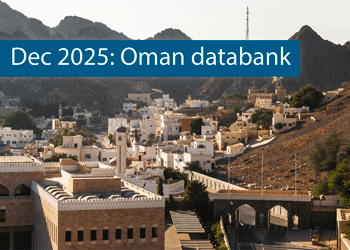 Oman’s growth forecast points upwards
Oman’s growth forecast points upwards24 December 2025
-
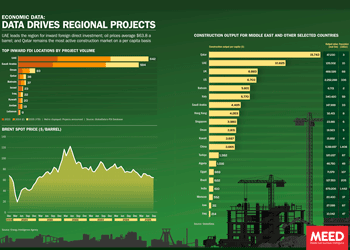 December 2025: Data drives regional projects
December 2025: Data drives regional projects23 December 2025
-
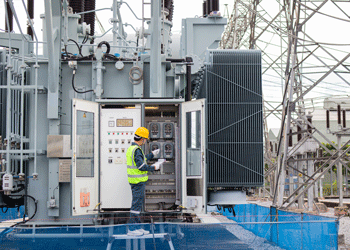 Local firm bids lowest for Kuwait substation deal
Local firm bids lowest for Kuwait substation deal22 December 2025
-
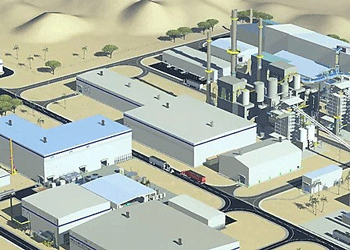 Saudi-Dutch JV awards ‘supercentre’ metals reclamation project
Saudi-Dutch JV awards ‘supercentre’ metals reclamation project22 December 2025
-
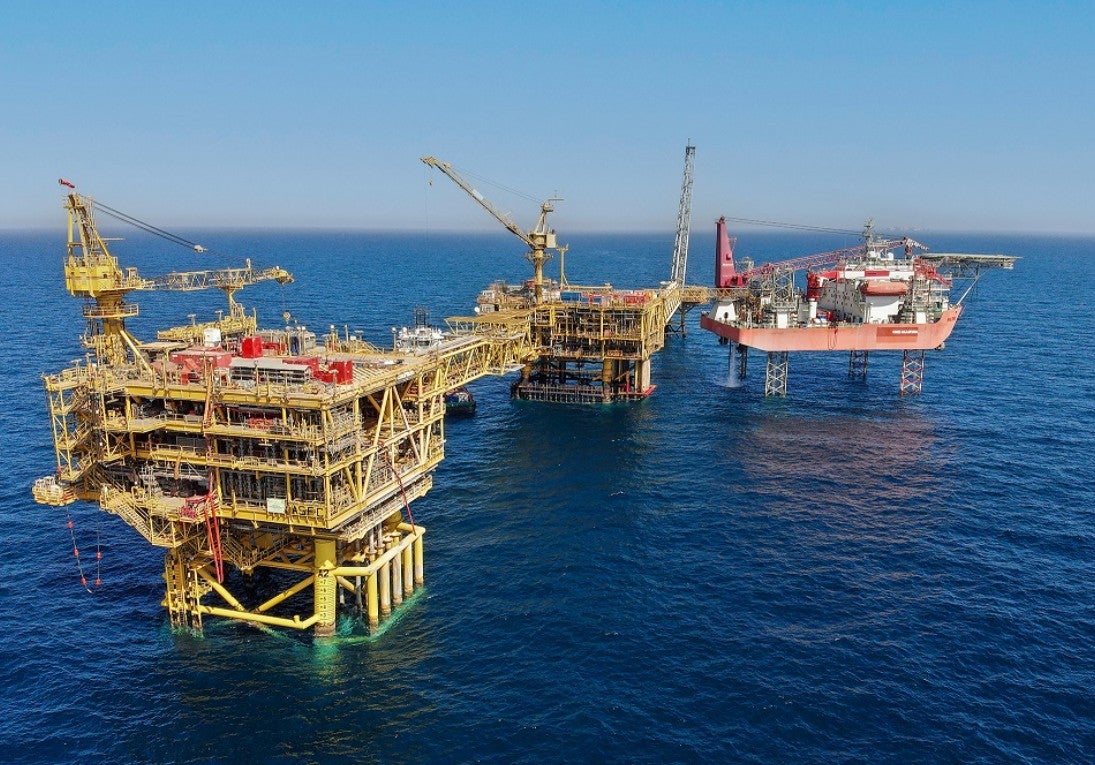 QatarEnergy LNG awards $4bn gas project package
QatarEnergy LNG awards $4bn gas project package22 December 2025
All of this is only 1% of what MEED.com has to offer
Subscribe now and unlock all the 153,671 articles on MEED.com
- All the latest news, data, and market intelligence across MENA at your fingerprints
- First-hand updates and inside information on projects, clients and competitors that matter to you
- 20 years' archive of information, data, and news for you to access at your convenience
- Strategize to succeed and minimise risks with timely analysis of current and future market trends

Related Articles
-
 Oman’s growth forecast points upwards
Oman’s growth forecast points upwards24 December 2025

MEED’s January 2026 report on Oman includes:
> COMMENT: Oman steadies growth with strategic restraint
> GVT & ECONOMY: Oman pursues diversification amid regional concerns
> BANKING: Oman banks feel impact of stronger economy
> OIL & GAS: LNG goals galvanise Oman’s oil and gas sector
> POWER & WATER: Oman prepares for a wave of IPP awards
> CONSTRUCTION: Momentum builds in construction sectorTo see previous issues of MEED Business Review, please click herehttps://image.digitalinsightresearch.in/uploads/NewsArticle/15306449/main.gif -
 December 2025: Data drives regional projects
December 2025: Data drives regional projects23 December 2025
Click here to download the PDF
Includes: Top inward FDI locations by project volume | Brent spot price | Construction output
MEED’s January 2026 report on Oman includes:
> COMMENT: Oman steadies growth with strategic restraint
> ECONOMY: Oman pursues diversification amid regional concerns
> BANKING: Oman banks feel impact of stronger economy
> OIL & GAS: LNG goals galvanise Oman’s oil and gas sector
> POWER & WATER: Oman prepares for a wave of IPP awards
> CONSTRUCTION: Momentum builds in construction sectorTo see previous issues of MEED Business Review, please click herehttps://image.digitalinsightresearch.in/uploads/NewsArticle/15306140/main.gif -
 Local firm bids lowest for Kuwait substation deal
Local firm bids lowest for Kuwait substation deal22 December 2025
The local Al-Ahleia Switchgear Company has submitted the lowest price of KD33.9m ($110.3m) for a contract to build a 400/132/11 kV substation at the South Surra township for Kuwait’s Public Authority for Housing Welfare (PAHW).
The bid was marginally lower than the two other offers of KD35.1m and KD35.5m submitted respectively by Saudi Arabia’s National Contracting Company (NCC) and India’s Larsen & Toubro.
PAHW is expected to take about three months to evaluate the prices before selecting the successful contractor.
The project is one of several transmission and distribution projects either out to bid or recently awarded by Kuwait’s main affordable housing client.
This year alone, it has awarded two contracts worth more than $100m for cable works at its 1Z, 2Z, 3Z and 4Z 400kV substations at Al-Istiqlal City, and two deals totalling just under $280m for the construction of seven 132/11kV substations in the same township.
Most recently, it has tendered two contracts to build seven 132/11kV main substations at its affordable housing project, west of Kuwait City. The bid deadline for the two deals covering the MS-01 through to MS-08 substations is 8 January.
https://image.digitalinsightresearch.in/uploads/NewsArticle/15305745/main.gif -
 Saudi-Dutch JV awards ‘supercentre’ metals reclamation project
Saudi-Dutch JV awards ‘supercentre’ metals reclamation project22 December 2025
The local Advanced Circular Materials Company (ACMC), a joint venture of the Netherlands-based Shell & AMG Recycling BV (SARBV) and local firm United Company for Industry (UCI), has awarded the engineering, procurement and construction (EPC) contract for the first phase of its $500m-plus metals reclamation complex in Jubail.
The contract, estimated to be worth in excess of $200m, was won by China TianChen Engineering Corporation (TCC), a subsidiary of China National Chemical Engineering Company (CNCEC), following the issue of the tender in July 2024.
Under the terms of the deal, TCC will process gasification ash generated at Saudi Aramco’s Jizan refining complex on the Red Sea coast to produce battery-grade vanadium oxide and vanadium electrolyte for vanadium redox flow batteries. AMG will provide the licensed technology required for the production process.
The works are the first of four planned phases at the catalyst and gasification ash recycling ‘Supercentre’, which is located at the PlasChem Park in Jubail Industrial City 2 alongside the Sadara integrated refining and petrochemical complex.
Phase 2 will expand the facility to process spent catalysts from heavy oil upgrading facilities to produce ferrovanadium for the steel industry and/or additional battery-grade vanadium oxide.
Phase 3 involves installing a manufacturing facility for residue-upgrading catalysts.
In the fourth phase, a vanadium electrolyte production plant will be developed.
The developers expect a total reduction of 3.6 million metric tonnes of carbon dioxide emissions a year when the four phases of the project are commissioned.
SARBV first announced its intention to build a metal reclamation and catalyst manufacturing facility in Saudi Arabia in November 2019. The kingdom’s Ministry of Investment, then known as the Saudi Arabian General Investment Authority (Sagia), supported the project.
In July 2022, SARBV and UCI signed the agreement to formalise their joint venture and build the proposed facility.
The project has received support from Saudi Aramco’s Namaat industrial investment programme. Aramco, at the time, also signed an agreement with the joint venture to offtake vanadium-bearing gasification ash from its Jizan refining complex.
Photo credit: SARBV
https://image.digitalinsightresearch.in/uploads/NewsArticle/15305326/main.gif -
 QatarEnergy LNG awards $4bn gas project package
QatarEnergy LNG awards $4bn gas project package22 December 2025
QatarEnergy LNG, a subsidiary of state-owned QatarEnergy, has awarded the main engineering, procurement, construction and installation (EPCI) contract for a major package for the second phase of its North Field Production Sustainability (NFPS) project.A consortium comprising the Italian contractor Saipem and state-owned China Offshore Oil Engineering Company (COOEC) has secured the EPCI contract for the COMP5 package. The contract value is $4bn, with Saipem declaring its share to be worth $3.1bn.
Milan-headquartered Saipem said the contract will run for about five years. The scope of work comprises engineering, procurement, fabrication and installation of two compression complexes, each including a compression platform, a living quarters platform, a flare platform supporting the gas combustion system, and the related interconnecting bridges. Each complex will have a total weight of about 68,000 tonnes.
Offshore installation operations will be carried out by Saipem’s De He construction vessel in 2029 and 2030.
MEED previously reported that the following contractors submitted bids for the NFPS phase two COMP5 package:
- Larsen & Toubro Energy Hydrocarbon (India)
- McDermott (US)
- Saipem/China Offshore Oil Engineering Company (Italy/China)
QatarEnergy LNG, formerly Qatargas, is said to have issued the tender for the NFPS phase two COMP5 package in the first quarter of the year.
Contractors submitted technical bids for the COMP5 package in late June, while commercial bids were submitted by 8 October, as per sources.
Based upon initial evaluation of bids by QatarEnergy LNG, L&TEH has emerged as the lowest bidder for the COMP5 package, followed by McDermott, with the consortium of Saipem and COOEC in third place, MEED reported in late October.
In the weeks following that, the project operator is said to have engaged all bidders for a final round of negotiations, during which the consortium of Saipem and COOEC is believed to have “clinched the deal”, according to sources.
The detailed scope of work on the COMP5 package covers the EPCI work on the following:
- Two gas compression platforms, each weighing 30,000-35,000 tonnes, plus jacket
- Two living quarters platforms, plus jacket
- Two gas flare platforms, plus jacket
- Brownfield modification work at two complexes
NFPS scheme
QatarEnergy’s North Field liquefied natural gas (LNG) expansion programme requires the state enterprise to pump large volumes of gas from the North Field offshore reserve to feed the three phases of the estimated $40bn-plus programme.
QatarEnergy has already invested billions of dollars in engineering, procurement and construction works on the two phases of the NFPS project, which aims to maintain steady gas feedstock for the North Field LNG expansion phases.
The second NFPS phase will mainly involve building gas compression facilities to sustain and gradually increase gas production from Qatar’s offshore North Field gas reserve over the long term.
Saipem has been the most successful contractor on the second NFPS phase, securing work worth a total of $8.5bn.
QatarEnergy LNG awarded Saipem a $4.5bn order in October 2022 to build and install gas compression facilities. The main scope of work on the package, which is known as EPCI 2, covers two large gas compression complexes that will comprise decks, jackets, topsides, interconnecting bridges, flare platforms, living quarters and interface modules.
The gas compression complexes – CP65 and CP75 – will weigh 62,000 tonnes and 63,000 tonnes, respectively, and will be the largest fixed steel jacket compression platforms ever built.
Following that, Saipem won combined packages COMP3A and COMP3B of the NFPS project’s second phase in September last year.
The scope of work on the combined packages encompasses the EPCI of a total of six platforms, approximately 100 kilometres (km) of corrosion resistance alloy rigid subsea pipelines of 28-inches and 24-inches diameter, 100km of subsea composite cables, 150km of fibre optic cables and several other subsea units.
Separately, QatarEnergy LNG awarded McDermott the contract for the NFPS second phase package known as EPCI 1, or COMP1, in July 2023. The scope of work on the estimated $1bn-plus contract is to install a subsea gas pipeline network at the North Field gas development.
In March this year, India’s Larsen & Toubro Energy Hydrocarbon (LTEH) won the main contract for the combined 4A and 4B package, which is the fourth package of the second phase of the NFPS project and is estimated to be valued at $4bn-$5bn.
The main scope of work on the package is the EPCI of two large gas compression systems that will be known as CP8S and CP4N, each weighing 25,000-35,000 tonnes. The contract scope also includes compression platforms, flare gas platforms and other associated structures.
LTHE sub-contracted detailed engineering and design works on the combined 4A and 4B package to French contractor Technip Energies.
NFPS first phase
Saipem is also executing the EPCI works on the entire first phase of the NFPS project, which consists of two main packages.
Through the first phase of the NFPS scheme, QatarEnergy LNG aims to increase the early gas field production capacity of the North Field offshore development to 110 million tonnes a year.
QatarEnergy LNG awarded Saipem the contract for the EPCI package in February 2021. The package is the larger of the two NFPS phase one packages and has a value of $1.7bn.
Saipem’s scope of work on the EPCI package encompasses building several offshore facilities for extracting and transporting natural gas, including platforms, supporting and connecting structures, subsea cables and anti-corrosion internally clad pipelines.
The scope of work also includes decommissioning a pipeline and other significant modifications to existing offshore facilities.
In addition, in April 2021, QatarEnergy LNG awarded Saipem two options for additional work within the EPCI package, worth about $350m.
QatarEnergy LNG awarded Saipem the second package of the NFPS phase one project, estimated to be worth $1bn, in March 2021.
Saipem’s scope of work on the package, which is known as EPCL, mainly covers installing three offshore export trunklines running almost 300km from their respective offshore platforms to the QatarEnergy LNG north and south plants located in Ras Laffan Industrial City.
Saipem performed the front-end engineering and design work on the main production package of the first phase of the NFPS as part of a $20m contract that it was awarded in January 2019. This provided a competitive advantage to the Italian contractor in its bid to win the package.
https://image.digitalinsightresearch.in/uploads/NewsArticle/15305330/main2239.jpg

